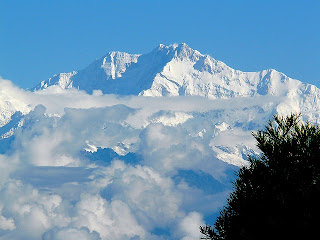 |
| Rajasthan Desert |
Rajasthan is a state in the northwest of India.Jaipur is the capital and the largest city of the state.The main
attraction for travellers is the vast Desert of Thar and one of the oldest
mountain ranges in the world - Aravalis - and the Rajput heritage which is
apparent in the forts, temples and palaces established by the Rajput Kings like
Bappa Rawal, Rana Kumbha, Rana Sanga and Rana Pratap. Rajasthan is one of the
most popular tourist destination to observe Indian heritage and royalty
closely.
 |
| Royal Rajasthan on Wheels - Train |
 |
| Rajasthan Folk Dance |
Travel in Palace on Wheels- Palace on wheels is one of most
luxurious train in the world, equipped with all sort of luxurious comfort. This
train is the most memorable and pleasing way to explore the beauty of
Rajasthan. This train has exact replica of almost everything as kings used to
have in their palaces. This train covers the area of Jaipur, also known as Pink
City, Jaisalmer, Jodhpur, Ranthambhore National Park, Chittaurgarh, Udaipur,
Bharatpur and Agra before ending its Journey to Delhi.
Desert safari is the best way to explore the world famous “Thar Desert”, located in Rajasthan. Tourists can explore the real beauty of Rajasthan villages, their culture, tradition and colours through this amazing ride.
Rajasthan attracted 14 percent of total foreign visitors
during 2009-2010 which is the fourth highest among Indian states. It is fourth
also in Domestic tourist visitors.Endowed with natural beauty and a great
history, tourism is a flourishing industry in Rajasthan. The palaces of Jaipur
and Ajmer-Pushkar, the lakes of Udaipur, the desert forts of Jodhpur, Taragarh
Fort (Star Fort) in Bundi, and Bikaner and Jaisalmer rank among the most
preferred destinations in India for many tourists both Indian and foreign.
Tourism accounts for eight percent of the state's domestic product. Many old
and neglected palaces and forts have been converted into heritage hotels.
Tourism has increased employment in the hospitality sector.
 |
| Rajasthan Palaces |
Rajasthan is famous for its forts, intricately carved
temples, and decorated havelis, which were built by Rajput kings in pre-Muslim
era Rajasthan. Rajasthan's Jaipur Jantar Mantar, Dilwara Temples, Chittorgarh
Fort, Lake Palace, miniature paintings in Bundi, and numerous city palaces and
havelis are an important part of the architectural heritage of India. Jaipur,
the Pink City, is noted for the ancient houses made of a type of sand stone
dominated by a pink hue. In Bundi, maximum houses are painted blue. At Ajmer,
the white marble Bara-dari on the Anasagar lake is exquisite. Jain Temples dot
Rajasthan from north to south and east to west. Dilwara Temples of Mount Abu,
Ranakpur Temple dedicated to Lord Adinath in Pali District, Jain temples in the
fort complexes of Chittor, Jaisalmer and Kumbhalgarh, Lodurva Jain temples,
Bhandasar and Karni Mata Temple of Bikaner are some of the best examples.


















